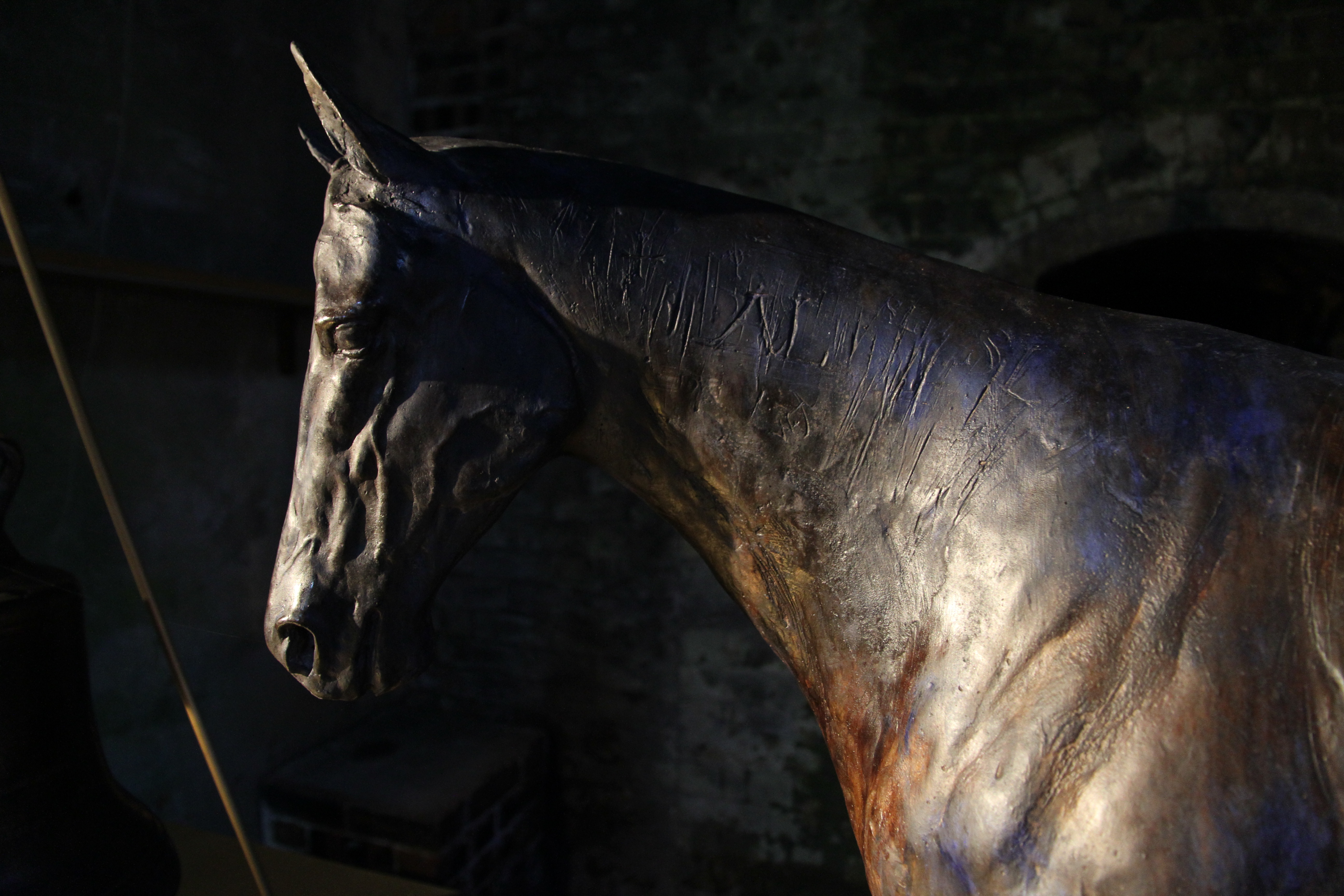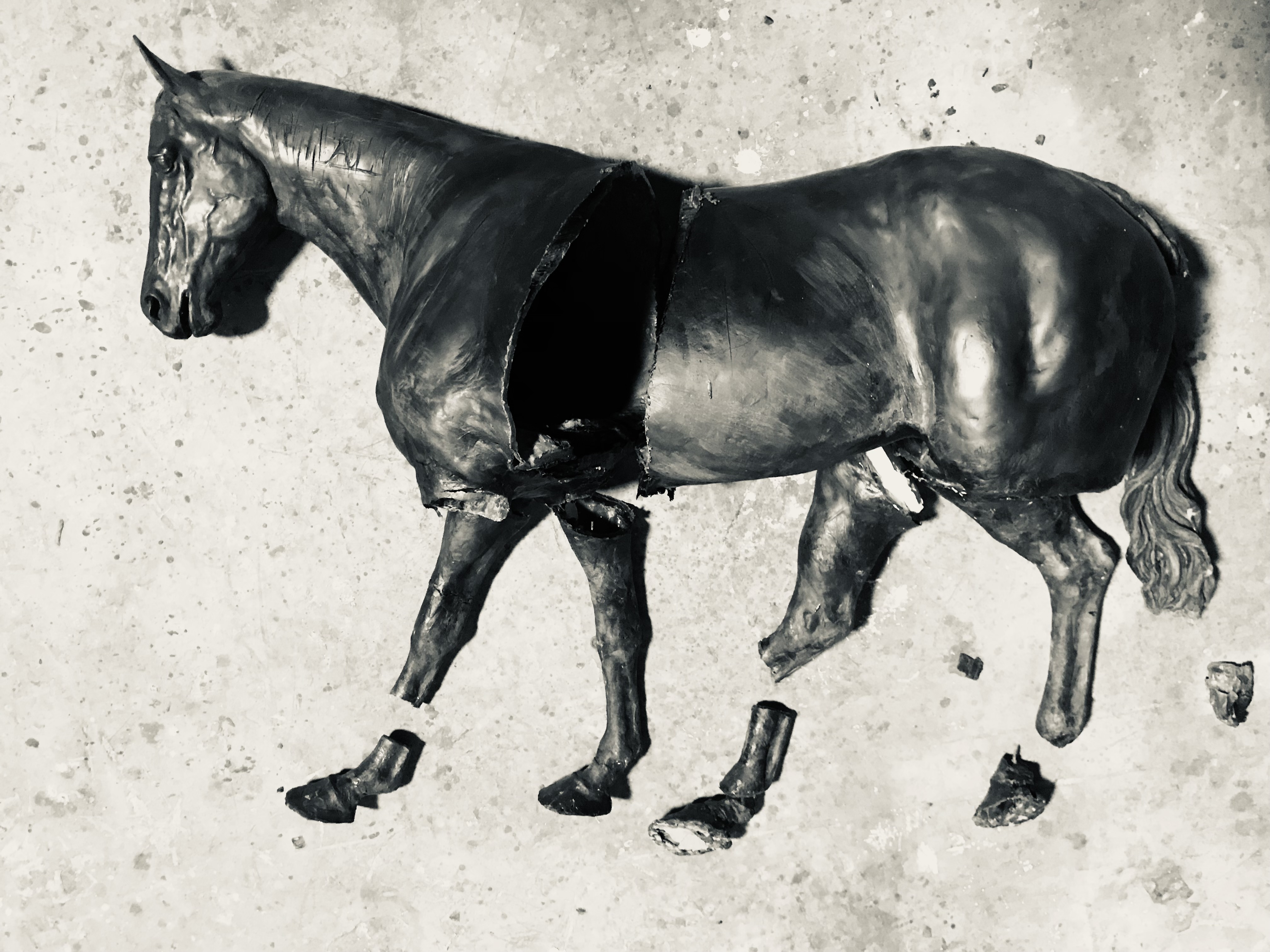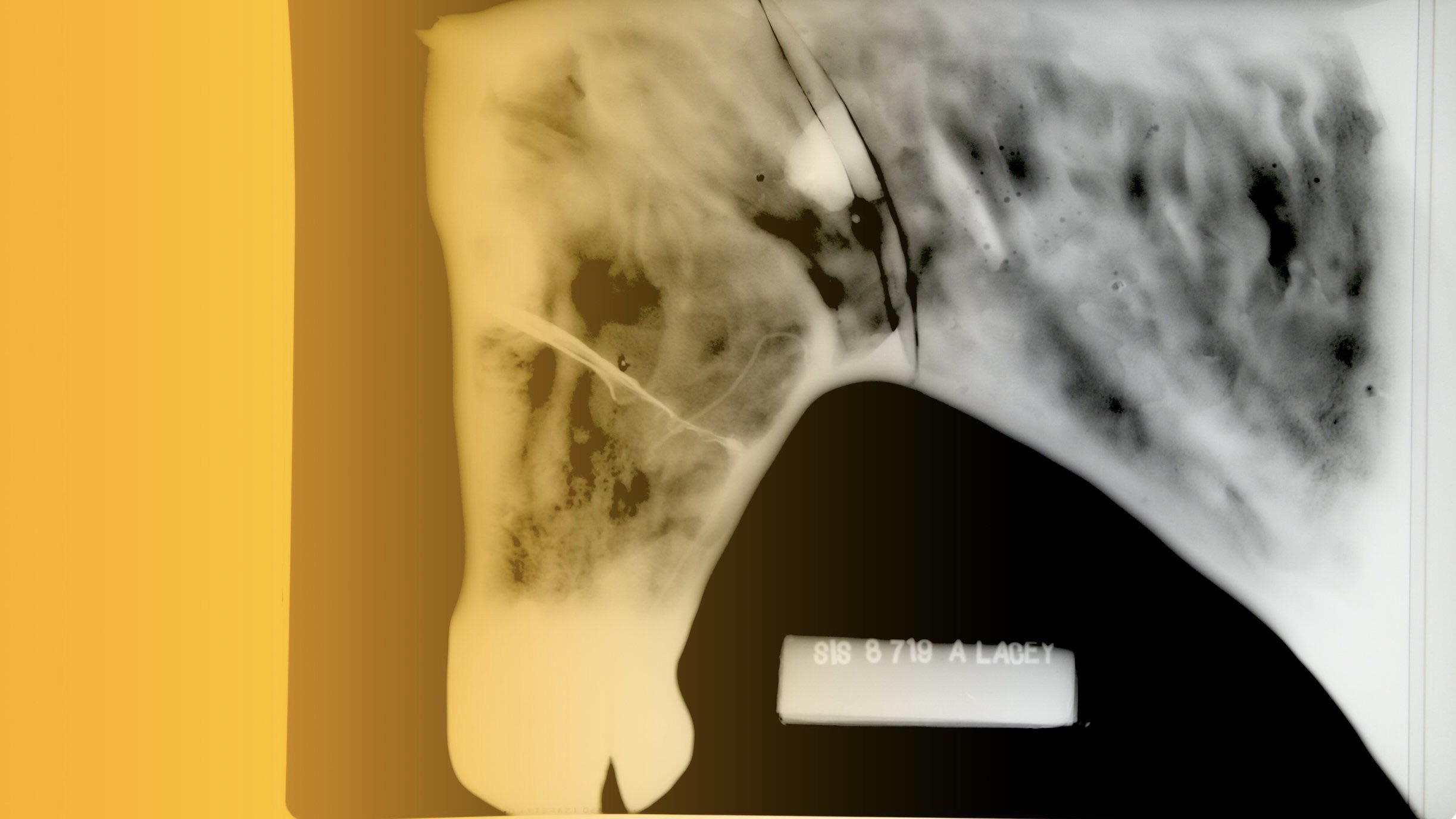
Heddwch

A sculptural meditation on pain, destruction, healing and peace...

The horse (Heddwch) was initially commissioned many years ago to be an emblem of equine valorisation, a symbol of power and something I do not wholly agree with. It was also created during a time of personal struggle, of doubt and fatigue.
A commission of this sort is usually a gift for most artists. This gift however quickly soured and turned into poisoned chalice we dread to sip from but reluctantly swallow in order to survive. For months I struggled on modelling the form and then destroying it until it became a constant cyclical process and my relationship with the commissioners became bitter. In the end I could not work on the horse without acknowledging an inner sickness had taken over me and that a hatred of thing I was creating had consumed me. At this point it was better to walk away from the battle then fight on blindly hoping against hope that the outcome would be positive.
I decided to step back from the project taking the horse with me.










My relationship to the horse altered slowly over time by increments too small to understand but felt in the body and by the hand that tirelessly re-worked its form. Its proud stance shifted becoming simpler, more embodied in peace than war. At this time I would often break apart the wax model of the horse. The position of the head and neck altered to find a new arc, a subtle tilt or flex in the muscle would be the shift its presence from a timid restraint to an unbolded force.
By experimentation I found I could point towards something deeper in the horse's gaze, more reflective, patient and caring. Small adjustments of the body did the same, reducing the drama of its physicality, its pride or power for something quieter and more resolute. What is preposterous is the idea that these nuances of emotion and physical cadence are achieved by pushing, pulling, cracking and breaking a waxen surface that is inanimate, cold and unconcerned by such efforts.
This horse is not perfect by any means and most definitely not the typical example of the equestrian ideal but for me it became a perfect emblem of peace. There is a deeper irony here because throughout its long history bronze has been the primary medium of war and all bronze sculptures are unwittingly and inherently bound to that darker past by the very process that makes it.
From the first arrowhead that pierced the flesh to the cannon that broke the walls, bronze has been the engine of war in almost all cultures around the world. It is also no surprise that the casting process contains imagery analogous to the violence seen in the heat of battle. The red wax used to model the sculpture bleeds from the casting mould like an open wound when heated in the kiln.









Heddwch was cast using historical methods more commonly associated with the medieval and renaissance periods than the present. The wax initial model was made with beeswax and pine resin; the casting mould from clay, hair, and brick dust; the bronze from gathered and recycled metals, previous casts, industrial waste, bullet and mortar shells.
With these ingredients the modern day aesthetic for purity and precision had been exchanged for the rich vigour and marks left by the casting process of a different time. What we would today describe as casting flaws are to my mind evidence of moments of the exquisite dance between material and process, intention and desire. Bronze recycled from redundant casts are broken in the fire and melted in the punishing heat of the furnace. And once the bronze is cast, that same casting mould from which the wax wept is violently broken to release the nascent anima within. However, it is important to recognise that bronze’s other great quality is as the preferred medium for some of the most prestigious and sacred works of art. A material that has been the cause of so much pain in the world also can touch the heart and reflect the depths and wonder of human nature.


The horse has become a metaphor,
a sublimation
from pain to peace.
Resolute in its patience
the horse stands
with a steady gaze and says
I am with you, I will not leave.
War is the failure of all things
Especially when that war
Is in your heart.